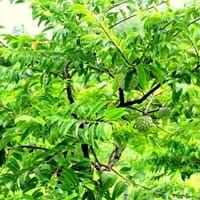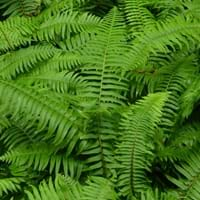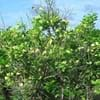Life Span
Perennial
Perennial
Origin
Caribbean, South America
Australia
Types
Pinks Mammoth, African Pride, Late Gold, Geffner, Hilary White
Polystichum solitarium
Habitat
Warm and moist climatic conditions
Shady Edge, Woodland Garden Dappled Shade
USDA Hardiness Zone
10-13
9-11
Sunset Zone
Not Available
H1, H2
Habit
Upright/Erect
Arching/Fountain-shaped
Flower Color
Yellow green
Not Available
Flower Color Modifier
Bicolor
Bicolor
Fruit Color
Light Green, Sea Green
Not Available
Leaf Color in Spring
Light Green
Green, Dark Green
Leaf Color in Summer
Light Green
Green, Dark Green
Leaf Color in Fall
Light Green
Green, Dark Green
Leaf Color in Winter
Light Green
Green, Dark Green
Leaf Shape
oblong or narrow-lanceolate
Saw-tooth like
Plant Season
Summer
Spring, Summer, Fall, Winter
Sunlight
Full Sun, Partial Sun
Full Shade, Partial shade
Type of Soil
Loam, Sand
Loam, Sand
The pH of Soil
Acidic, Neutral, Alkaline
Acidic, Neutral, Alkaline
Soil Drainage
Well drained
Average
Bloom Time
Early Summer, Summer
All year
Tolerances
Drought
Drought, Dry Conditions, Light Frost, Shade areas, Variety of soil types
Where to Plant?
Container
Ground
How to Plant?
Seedlings
Divison, From Rhizomes, Spores
Plant Maintenance
Medium
Low
Watering Requirements
Do Not over Water, Does not require regular watering
when new, water every week
In Summer
Lots of watering
Lots of watering
In Spring
Moderate
Moderate
In Winter
Average Water
Average Water
Soil pH
Acidic, Neutral, Alkaline
Acidic, Neutral, Alkaline
Soil Type
Loam, Sand
Loam, Sand
Soil Drainage Capacity
Well drained
Average
Sun Exposure
Full Sun, Partial Sun
Full Shade, Partial shade
Pruning
Prune young trees into an open vase shape
Remove damaged leaves, Remove dead branches, Remove dead leaves
Fertilizers
Nitrogen
All-Purpose Liquid Fertilizer
Pests and Diseases
Anthracnose, Diplodia rot, Leaf spot
Pests and diseases free
Plant Tolerance
Drought
Drought, Dry Conditions, Light Frost, Shade areas, Variety of soil types
Flowers
Insignificant
None
Flower Petal Number
Single
Single
Foliage Texture
Medium
Coarse
Foliage Sheen
Matte
Glossy
Attracts
Fruit Bats
Birds, Butterflies, Hummingbirds
Allergy
Oral Allergy
Not Available
Aesthetic Uses
Not Used For Aesthetic Purpose
Cottage Garden, Showy Purposes
Beauty Benefits
Promotes Healthy Hair, Promotes healthy skin
Good for skin
Environmental Uses
Air purification
Air purification, Food for animals
Medicinal Uses
Diabetes, Diarrhea
Poultice, Sore throat, Tonsillitis
Part of Plant Used
Bark, Fruits, Seeds
Leaves, Root, Stem
Other Uses
Used to make hair tonic, Used to promote healthy blood flow during menstruation
Used as Ornamental plant, Used for its medicinal properties
Used As Indoor Plant
No
No
Used As Outdoor Plant
Yes
Yes
Garden Design
Fruit / Fruit Tree, Shade Trees, Tropical
Bedding Plant, Container, Feature Plant, Houseplant, Tropical, Water Gardens
Botanical Name
ANNONA squamosa
Polystichum munitum
Common Name
Sugar Apple
Swordfern, western swordfern
In Hindi
सीताफल
Swordfern
In German
Zuckerapfel
Sword Fern
In French
Sugar Apple
Epée Fern
In Spanish
Manzana de azúcar
helecho espada
In Greek
ζάχαρη της Apple
ξίφος φτέρη
In Portuguese
Pinha
espada Fern
In Polish
Cukier Jabłko
Miecz Fern
In Latin
Sugar Apple
Fern gladio
Phylum
Magnoliophyta
Pteridophyta
Class
Magnoliopsida
Filicopsida
Order
Magnoliales
Polypodiales
Family
Annonaceae
Dryopteridaceae
Clade
Angiosperms, Magnoliids
Not Available
Tribe
Abreae
Not Available
Subfamily
Maloideae
Not Available
Number of Species
Not Available
Importance of Sugar Apple and Swordfern
Want to have the most appropriate plant for your garden? You might want to know the importance of Sugar Apple and Swordfern. Basically, these two plants vary in many aspects. Compare Sugar Apple and Swordfern as they differ in many characteristics such as their life, care, benefits, facts, etc. Every gardener must at least have the slightest clue about the plants he wants to plant in his garden. Compare their benefits, which differ in many ways like facts and uses. The medicinal use of Sugar Apple is Diabetes and Diarrhea whereas of Swordfern is Poultice, Sore throat and Tonsillitis. Sugar Apple has beauty benefits as follows: Promotes Healthy Hair and Promotes healthy skin while Swordfern has beauty benefits as follows: Promotes Healthy Hair and Promotes healthy skin.
Compare Facts of Sugar Apple vs Swordfern
How to choose the best garden plant for your garden depending upon its facts? Here garden plant comparison will help you to solve this query. Compare the facts of Sugar Apple vs Swordfern and know which one to choose. As garden plants have benefits and other uses, allergy is also a major drawback of plants for some people. Allergic reactions of Sugar Apple are Oral Allergy whereas of Swordfern have Not Available respectively. Having a fruit bearing plant in your garden can be a plus point of your garden. Sugar Apple has no showy fruits and Swordfern has no showy fruits. Also Sugar Apple is not flowering and Swordfern is not flowering . You can compare Sugar Apple and Swordfern facts and facts of other plants too.





